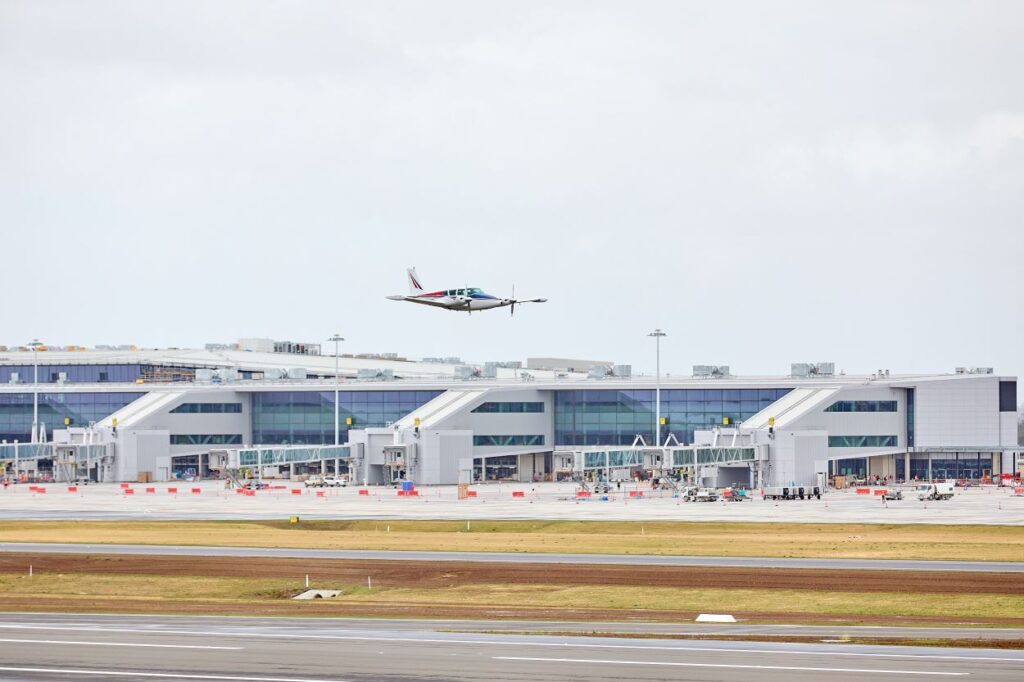
Yesterday’s bicentenary celebration of Hume and Hovell’s expedition to Melbourne coincided with another momentous event: the first plane had landed on the runway of Western Sydney International airport.
A light aircraft conducted several flights and landing on the Badgerys Creek airport as testing begins ahead of the official opening in 2026.
The Piper PA-30 Twin Engine Comancheaircraft tested the airfield’s approximately 3000 Aeronautical Ground Lights (AGLs) by taking off and landing from both ends of the runway during daylight, dusk and evening conditions to ensure the system is fit for purpose and ready to welcome aircraft upon opening.
Simon Hickey, the current CEO of Western Sydney International, said the rigorous runway testing regime was an important step for its construction partner, CPB Acciona Joint Venture.
“This week’s flight tests are an important commissioning requirement stipulated by the Civil Aviation Safety Authority (CASA) to help ensure our runway lighting infrastructure is fit for operations,” Mr Hickey said.
“These tests are the culmination of a tremendous amount of work by our contract partners to level the land, build multiple complex layers of sandstone and asphalt to form the 3.7km runway, and install lighting, line marking and technology systems that will soon support passenger and cargo operations at WSI.
“There are thousands of workers bringing WSI to life each day, many of whom are Western Sydney locals, and this week they can look down that runway and know they built something that will stand the test of time and provide a critical service to many millions of Australians.”

RUNWAY ‘FAST FACTS’:
- WSI will open with one runway, which can cater to 10 million passengers a year from day one of operations.
- Approximately 3,000 Aeronautical Ground Lights have been installed, which will guarantee the runway operations in low visibility.
- 348 High Intensity Approach Lights (HIAL) will penetrate the atmosphere far enough from touchdown to give directional, distance, and glidepath information for safe transition from instrument to visual flight.
- The runway will be the only airport in Sydney equipped with a modern CAT III-B instrument landing system, which will enable aircraft to continue operating safely in foggy conditions.
- The airfield has been designed with efficiency in mind. WSI’s rapid exit taxiways have been built at a 45-degree angle, allowing aircraft to exit and enter the runway at faster speeds.
- This means WSI’s average taxing time is around five minutes, significantly shorter compared to other airports around the world.
- The base layer of the 3.7km runway includes 5.5 million tonnes of quality sandstone diverted from landfill from Sydney-based tunnelling projects.
- While the runway is laid with asphalt, each end of the runway includes concrete sections to support aircraft when standing, taking off, landing and turning.
- The runway surface has been grooved to provide cross drainage and to achieve surface friction to facilitate aircraft landing and take-off. The grooving also enhances surface drainage by providing an effective path for water to flow away from the pavement, where hydroplaning on a wet surface is a risk to aircraft.
